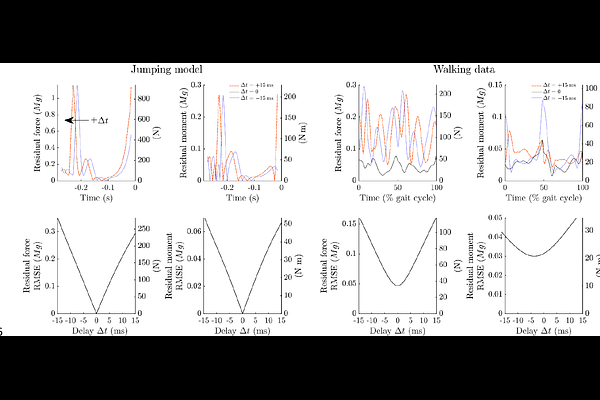Milliseconds matter: Biomechanical inverse dynamics analysis is highly sensitive to imperfect data synchronization

Milliseconds matter: Biomechanical inverse dynamics analysis is highly sensitive to imperfect data synchronization
Lemaire, K. K.; Kuo, A. D.
AbstractInverse dynamics analysis is the primary means of quantifying joint moments and powers from biomechanical data. The data are often combined from force plates, motion capture cameras, and perhaps body-worn inertial sensors, and must be temporally synchronized to avoid potentially large inverse dynamics errors. The principles behind the errors, and the sensitivities for movements such as human walking, have yet to be demonstrated. Here we quantify how inverse dynamics computations of joint moments, powers, and work are highly sensitive to temporal mis-synchronization. We do this with (1) a theoretical examination of inverse dynamics, supported by (2) a simulated multi-body jumping movement, and (3) experimental human walking data. The theoretical analysis shows that root-mean-square errors in joint powers increase linearly with temporal mis-synchronization, and increase more for faster movements. With the other analyses we quantify the specific amount. For example, for human walking at 1.25 m/s, an artificially induced 5 ms lag of force relative to motion resulted in a 29% root-mean-square error of the ankle joint moment. The corresponding error in ankle joint power was 58%, and five times as much for walking at 2.2 m/s. The residual force, a measure of internal inconsistency in the data, increased by almost 1% body weight for each millisecond of mis-synchronization for walking. These sensitivities are relevant because standard experimental equipment usually synchronizes only the recording of data, but not processing latencies internal to equipment, which can and do cause mis-synchronization on the order of ten milliseconds. Biomechanical data should be synchronized to within a few milliseconds, and with respect to physical stimulus, to yield accurate inverse dynamics analysis.